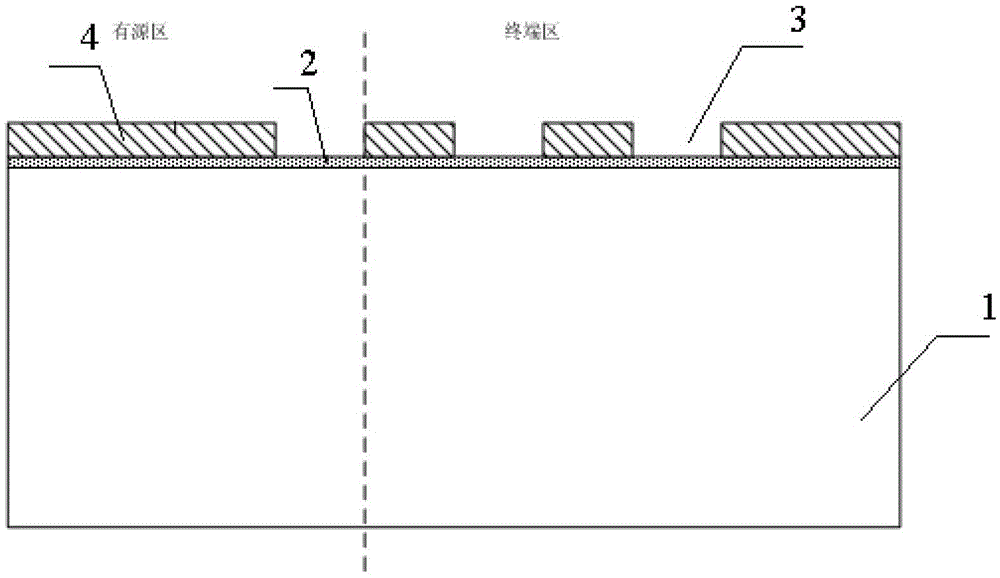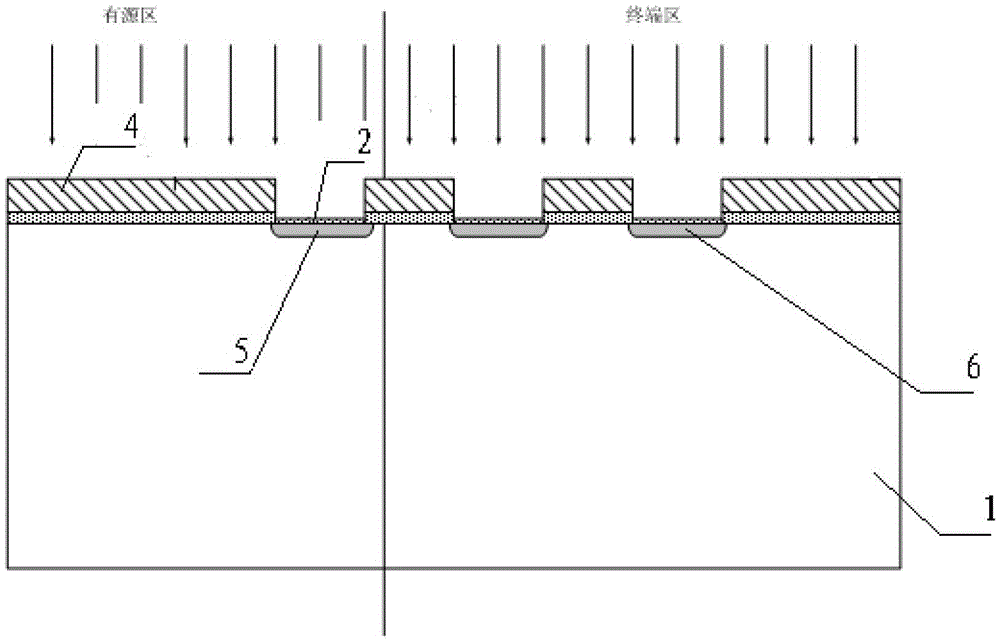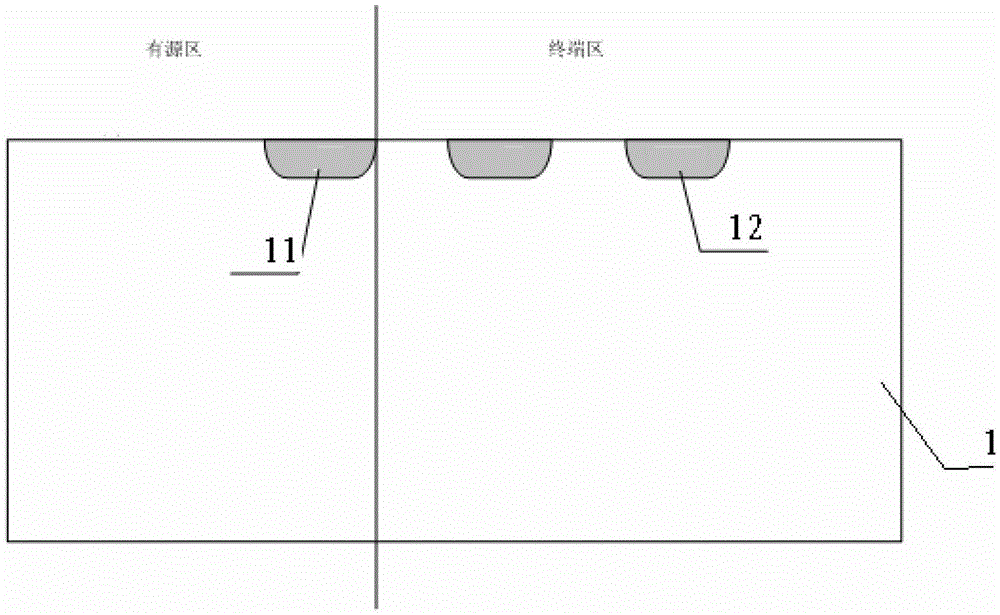Method for preparing terminal structure by proton irradiation
A technology of proton irradiation and termination structure, applied in semiconductor/solid-state device manufacturing, electrical components, circuits, etc., can solve the problems of implantation damage and serious lateral diffusion of N-type wells, achieve small implantation damage, reduce chip terminal area, The effect of reducing leakage current
- Summary
- Abstract
- Description
- Claims
- Application Information
AI Technical Summary
Problems solved by technology
Method used
Image
Examples
Embodiment 1
[0043] A method for preparing a terminal structure by proton irradiation provided by an embodiment of the present invention includes the following steps:
[0044] Step SA1: preparing the main junction and P-type field limiting ring of the chip on the substrate;
[0045] Step SA2: preparing a meta-packet structure on the chip forming the main junction and the P-type field limiting ring;
[0046] Step SA3: Combine Figure 8 As shown, after depositing metal electrodes on the chip forming the meta-packet structure, the cathode 18 is formed by etching;
[0047] Step SA4: forming an N-type well by annealing after proton implantation on the chip where the cathode is formed, and completing the front-side process of the chip.
[0048] Step SA5: Combine Figure 11 As shown, after the P-type ion implantation is performed on the back of the chip that has completed the front-side process to form the P-collector 21, a metal electrode is deposited to form the anode 22, and the finished pr...
Embodiment 2
[0057] Step SB1: preparing the main junction and P-type field limiting ring of the chip on the substrate;
[0058] Step SB2: preparing a meta-packet structure on the chip forming the main junction and the P-type field limiting ring;
[0059] Step SB3: Combine Figure 8 As shown, after depositing metal electrodes on the chip forming the meta-packet structure, the cathode 18 is formed by etching;
[0060] Step SB4: forming an N-type well on the chip forming the cathode by annealing after proton implantation, and completing the front-side process of the chip;
[0061] Step SB5: Combine Figure 12 As shown, after the P-type ion implantation is performed on the back of the chip that has completed the front-side process to form the P-collector 21, a metal electrode is deposited to form the anode 22, and the finished product is obtained.
[0062] Wherein, step SA1 prepares the main junction and the P-type field limiting ring of the chip on the substrate including:
[0063] SB11: ...
Embodiment 3
[0070] The difference between this embodiment and Embodiment 1 is that the preparation of the main junction and P-type field limiting ring of the chip on the substrate in step SC2 includes:
[0071] Step SC21: After the oxide layer on the substrate is etched to obtain an oxide layer window, the substrate is first implanted with low-doped P-type impurities through the oxide layer window to form a low-doped P-type well at the main junction position and The low-doped P-type well in the terminal region is then implanted with highly doped P-type impurities to form a highly doped P-type well at the main junction position and a highly doped P-type well in the terminal region;
[0072] Step SC22: Remove the photoresist from the chip forming the highly doped P-type well at the main junction position and the highly doped P-type well at the terminal region, and perform heat treatment to form a low-doped P-type main junction and a highly doped P-type main junction. Junction, and low-doped...
PUM
 Login to View More
Login to View More Abstract
Description
Claims
Application Information
 Login to View More
Login to View More - R&D
- Intellectual Property
- Life Sciences
- Materials
- Tech Scout
- Unparalleled Data Quality
- Higher Quality Content
- 60% Fewer Hallucinations
Browse by: Latest US Patents, China's latest patents, Technical Efficacy Thesaurus, Application Domain, Technology Topic, Popular Technical Reports.
© 2025 PatSnap. All rights reserved.Legal|Privacy policy|Modern Slavery Act Transparency Statement|Sitemap|About US| Contact US: help@patsnap.com



